#broadleaf arrowhead
Explore tagged Tumblr posts
Text

















Photos from a stopover at Prickett's Fort State Park after visiting Blake's grandmother. You can search my tumblr for prior posts about the history of the fort and the Job Prickett homestead or read about it here. Broadleaf arrowhead (Sagittaria latifolia) is now blooming along the river and butternuts have started dropping, meaning the end of summer is not far off. Butternut (Juglans cinerea) is similar in appearance and closely related to black walnut, but has oval-oblong fruits rather than round ones.
#appalachia#vandalia#west virginia#wildflowers#flora#summer#mon river trail#monongahela river#prickett's fort state park#jacob prickett#job prickett#american history#broadleaf arrowhead#duck-potato#cutleaf coneflower#green-headed coneflower#rose mallow#white tailed deer#butternut#white walnut
39 notes
·
View notes
Text




#photos#photography#flowers#plants#broadleaf arrowhead#white#flower#white flowers#green#arrowhead#arrowhead plant
1 note
·
View note
Text

Sagittaria latifolia, called wapato or the more unwieldy "broadleaf arrowhead," is native to most of North America, and everywhere it grows, it has historically been eaten by many, many Native American and First Nations peoples. Still is, in some places! The tubers, while bitter raw, can be eaten like potatoes, being steamed, boiled, or dried and processed later. That said, like a lot of wetland plants, it can absorb pollutants, so if you'd like to try it, I'd advise growing your own and looking for a solid, well-tested recipe.
I like the Confluence Project's article about wapato, which includes more about the history of wapato in the Columbia River area. Here's a section:
In the 1820’s, Native Americans showed the adventuresome botanist David Douglas the secrets of wapato harvesting and he thrived on them almost exclusively when in the field. Wapato is very bitter if eaten raw, but like potatoes they may be boiled, steamed or fire-roasted. Indigenous people dried them, too, for soups or pounded them into cakes (and traded them to newcomers like Lewis and Clark) or ground dried wapato into flour. Other edible parts of wapato include the tender unfurling leaves and stalk. Boil them like other greens. The flower stalk before it blossoms and the lateral tips of the immature rhizomes are also edible, raw or cooked. The white petals of the blossom are tasty raw with a mild mint flavor. [6] In 2011, this sacred first food returned to the Yakama Nation. Wheat lands were transformed to original wetlands after a decades-long restoration process carried out by the tribe. Wapato also returned after a seventy year “respite.” [7] Wapato was as important to the Yakama diet as other sacred foods like salmon or huckleberries. To celebrate and to reintroduce this first food, a school gym was designated as the feasting hall and laid out like traditional longhouses. By introducing it to students, tribal elders felt that future generations would now have the opportunity to preserve traditions and sacred rituals that had fallen out of practice. Student Emmanuelle Wallahee commented, “I was taught that nothing’s ever lost. It’s just been put away for awhile.” [8]
75 notes
·
View notes
Text


Broadleaf arrowhead / duck potato / wapato (Sagittaria latifolia) in bloom.
9/3/24. Triangle Bog, OH.
This aquatic plant produces edible tubers which are eaten by ducks and were eaten by Native American peoples.
17 notes
·
View notes
Text
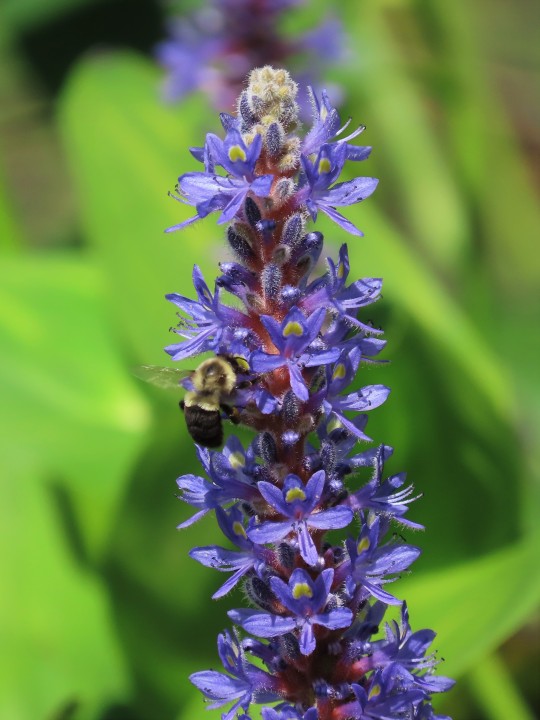


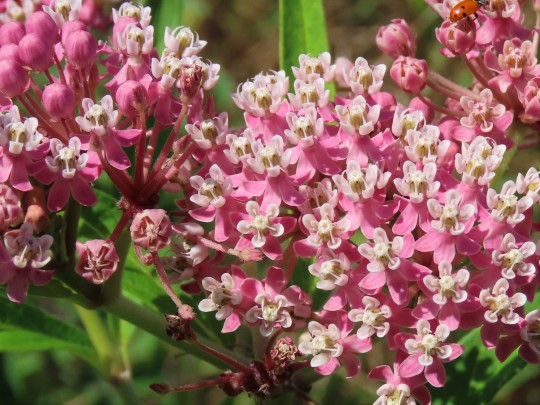

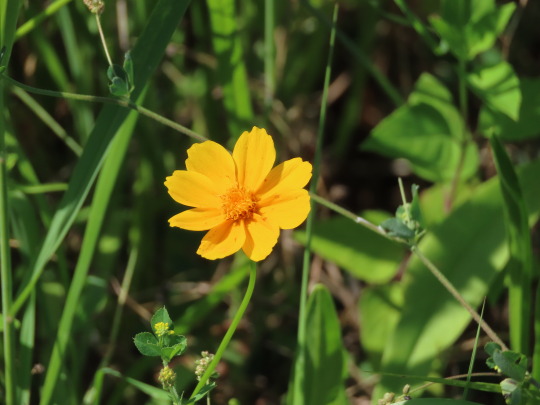
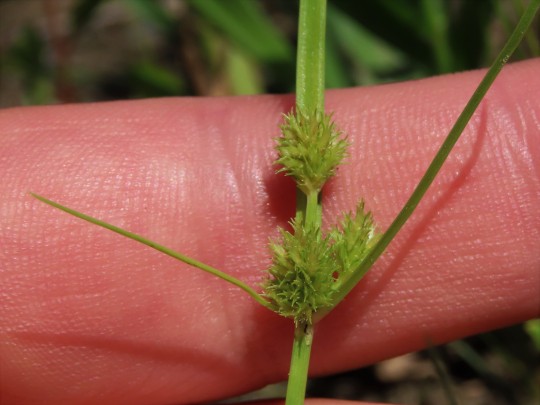


Yep. Plants Time
Pontederia cordata - Pickerelweed Verbena hastata - Blue Vervain Monarda fistulosa - Wild Bergamot Asclepias incarnata - Swamp Milkweed Sagittaria latifolia - Broadleaf Arrowhead Coreopsis lanceolata (!) - Lanceleaf Coreopsis (Nonnative to New Jersey, but often included in native seed mixes used for restoration projects, though considering its native range on the east coast ends in Virginia/How well it does up here and further north maybe it did range up here prior to glaciation?) Cyperus squarrosus - Bearded Flatsedge Solidago juncea - Early Goldenrod Echinacea purpurea (!) - Purple Coneflower (Another nonnative-native, a classic plant of midwest prairies thats been spread nationwide through both garden escapees and inclusion in native seed mixes) -8/23, Bergen County, NJ
52 notes
·
View notes
Text

sagittaria latifolia broadleaf arrowhead albert fw vick jr, 1988, lady bird johnson wildflower center
2 notes
·
View notes
Text

wapato/duck potato/broadleaf arrowhead (Sagittaria latifolia)
just a little baby i rescued last fall from some ppl who insist on constantly mowing the riparian zone around a rlly biodiverse lake... horrible awful thing to do T.T i found this little guy sprouting after being cut and i put it in a pot right before it went dormant and waited- little guy is back!!!!! :D
this is a native wetland plant that thrives in nutritious floodplains and freshwater marshes and swamps and makes gorgeous little white flowers in summer. and they have potatoes 0.0
technically not potatoes but shush thats a potato. theyre a rlly important staple food for a lot of indigenous peoples and since theyre native and apparently yummy id like to try some too- hopefully this one thrives this year so i can propagate it!!!
btw u can tell these apart from arrow arum by the points on the backs of the leaves - arrow arum is rounded, but wapato has sharp points :3
2 notes
·
View notes
Text
[Video description: me showing off my Sagittaria latifolia AKA broadleaf arrowhead or wapato or duck potato; growing in the pond in my parents' garden]
Ponds can be kitchen gardens too- there's a not insignificant number of edible aquatics that are worth growing. I chose to try and cultivate this one because it was mentioned in Eric Tosenmier's Edible Perennials book.
Be very careful with aquatic plants that are not native to your area. They can cause a huge amount of damage to the wider ecosystem if they escape.
#growing food#food security#edible aquatics#aquatic plants#pond#pond plants#wapato#indigenous food#Sagittaria latifolia#duck potato#perennial plants#garden#growing#kitchen garden
4 notes
·
View notes
Text
LII - Broadleaf Arrowhead
Leaving behind our unlived future.
Leaving the moment.
Leaving the smile.
Leaving your jokes.
Leaving the not being.
Leaving the room.
Leaving the possibility of now.
Leaving myself.
Leaving my thoughts.
Leaving my ideas.
Leaving my hope.
Leaving to be pure.
Leaving to be real.
Leaving to be.
Leaving to.
Leaving.

Picture by:
#poets on tumblr#my poems#poem#thank you snatam kaur#thank you ajeet kaur#thank you simrit kaur#thank you cassandra jenkins#thank you mei lan maurits#thank you DeepL#a thousand flowers#poetrycommunity#poems on tumblr#original poem#writerscreed
2 notes
·
View notes
Note
6, 9 and 16 for Kleo
6. costal goldenrod and broadleaf arrowhead : )
9. he really wishes that normal land buildings could just fall and sink into the water- he'd *love* to explore one, he just. has always felt a sense of dread exploring normal shipwrecks. maybe this would be different. outside of that he's always wanted to go over a waterfall!
16. he has gotten some schooling! he was taught by one of his adoptive fathers. had his father not gotten got the way he did, he probably would've been taught more about human culture and history- he's lowkey a nerd deep down, he would've enjoyed it
1 note
·
View note
Text
bishan-ang mo kio park
12.09.23 - TUESDAY
woah...my last post was more than a year ago, and also on a tuesday! i'm back with a bunch of amazing sightings, fresh from a visit to bishan-amk park this morning :)
without a doubt, this landscape wouldn't be so full of life if not for the restoration of the kallang river that runs through it. this is but a slim swathe of river, one that flows so gently it is almost silent -- but it is a breathtaking force of nature.
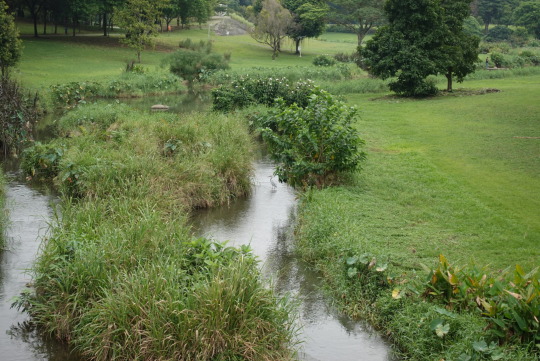
that something so raw and wild can exist at the centre of our concrete jungle is almost unbelievable :')
here are some of the other wonderful things i saw:

a grey heron (Ardea cinerea)! grateful that it tolerated our proximity & lingered long enough for photos. i've never seen an Ardea heron so close-up before.

the river is teeming with fish (and some turtles.) unfortunately, most of these species are invasive.

a purple-leaved button weed (Spermacoce ocymoides) growing amongst the bioswale on the riverbank. striking symmetry & colour contrast between the white flowers and dark leaves make this little weed exceptionally beautiful :)
[ my favourite wildflower ID resource ]

a red dwarf honey bee (Apis florea) busy with the flower of a broadleaf arrowhead (Sagittaria lancifolia), a plant that thrives in waterlogged soils.

this is, unfortunately, not one of the wonderful things i saw >:( invasive golden apple snails (Pomacea canaliculata) and their notorious pink eggs have thoroughly infiltrated our freshwater ecosystems. their speedy growth, high fecundity & ferocious appetite threaten native populations of apple snails. P. canaliculata originates from the americas, and the aquarium trade is believed to have introduced it to singapore. (ref)

spotted quite a few of these purple herons (Ardea purpurea), likely because a breeding colony lives in the area ^^ i find it endlessly fascinating that these huge waterbirds with their ungainly long necks roost high up in trees...

in the lotus pond, white-breasted waterhens (Amaurornis phoenicurus) walk on water by treading on lotus leaves.

the beautiful Nelumbo nucifera c:

to round it all out, here's a look down the river from the eastern end of the park. it exists as both versions — pre- & post-restoration — of itself at once. at the centre of this picture, a malayan water monitor (Varanus salvator) makes its way along the canalised section, advancing slowly towards the verdant wetlands beyond.
0 notes
Text
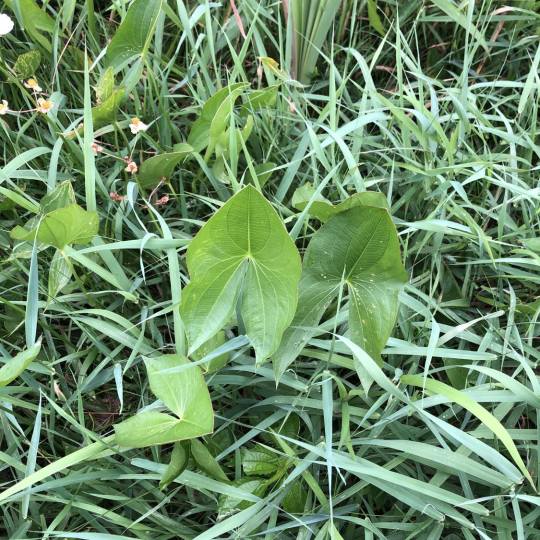
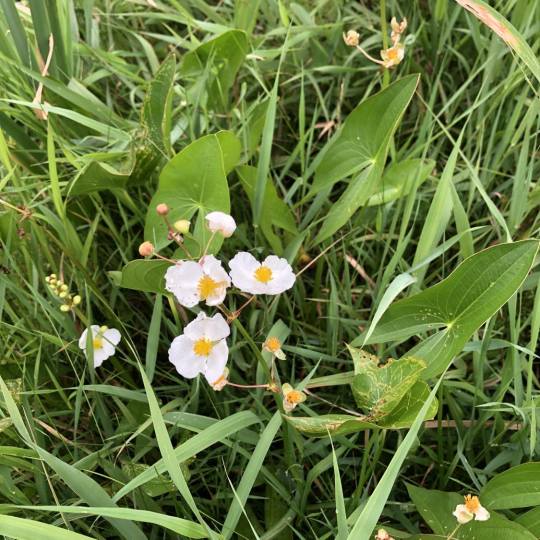
Out on a quick day hike, and spotted a neat, new-to-me plant on a hike today. The flower looked remarkably similar to a strawberry blossom, albeit quite a bit larger. The leaves were almost palm-sized*, and quite lush. Thanks to the Seek app, I found out it was the broadleaf arrowhead (sagitarria latifolia) also known as duck-potato or wapato. It produces an edible tuber that was used by the indigenous people of the Americas. It was beautiful and hardy and used to keep people alive through difficult conditions, and it was also known as katniss. So, yeah. I'm sure millions of people made this connection before me, but all these years later I'm saying well done Suzanne Collins. *mind, I have relatively wee hands and feet for my height, so...
0 notes
Text
Top 10 ornamental water plants for a Beautiful Aquatic Garden
Ornamental water plants are aquatic plants that are grown for their aesthetic appeal in a water garden. They not only enhance the visual beauty of the garden, but also help in maintaining the water quality by absorbing excess nutrients, providing oxygen, and shading the water surface. Some popular ornamental water plants include water lilies, lotuses, iris, papyrus, rushes, and water hyacinths. These plants come in a variety of colors, sizes, and shapes, allowing you to create a unique and beautiful aquatic garden that reflects your personal style. When selecting ornamental water plants, it is important to consider their growth habits, light and temperature requirements, and their suitability for the size of your water feature.

1. American Lotus 2. Water Poppy 3. Water Iris 4. Water lettuce 5. Water Lilies 6. Broadleaf arrowhead 7. Mosaic Flowers 8. Water Hyacinth 9. Water Forget-me-not 10. Pickerelweed
1 note
·
View note
Photo
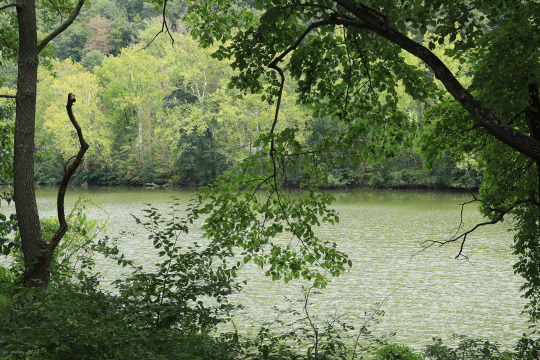

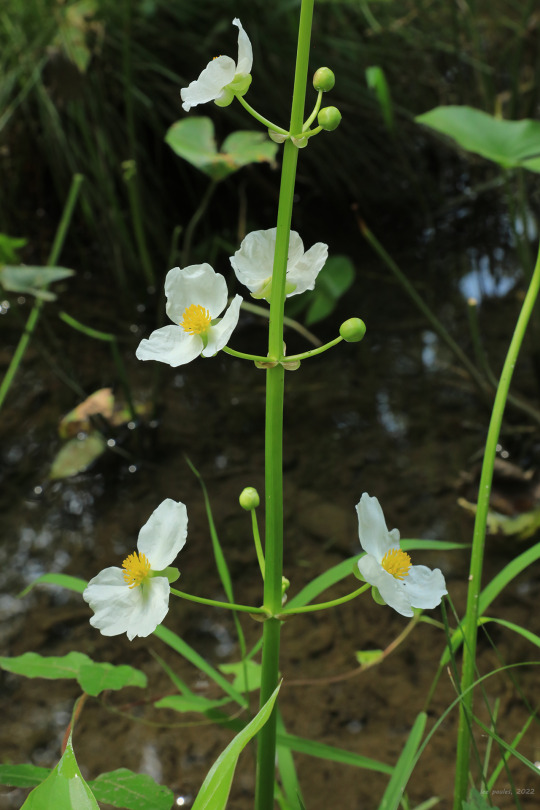
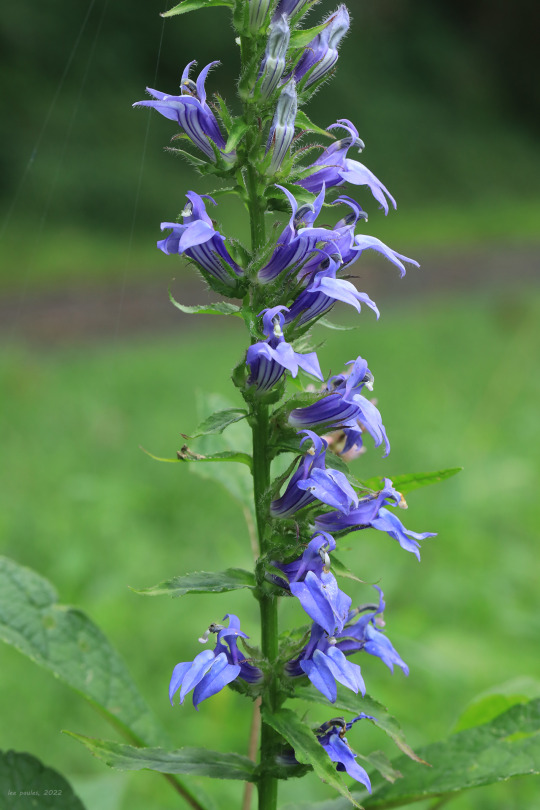
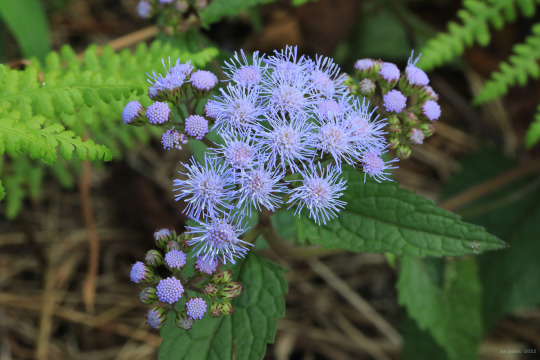
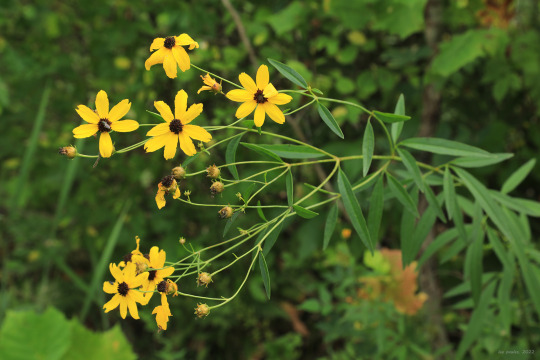

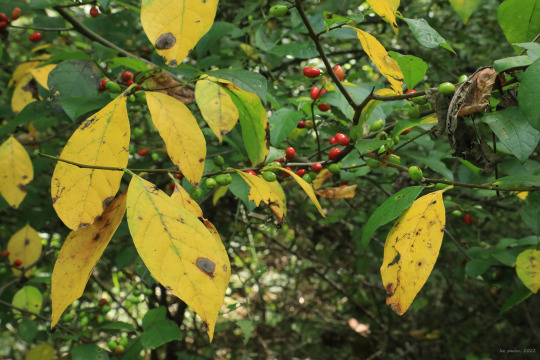
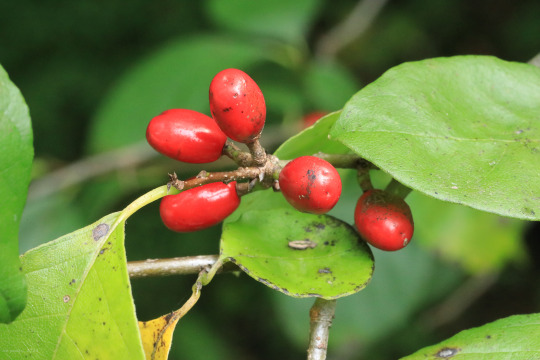
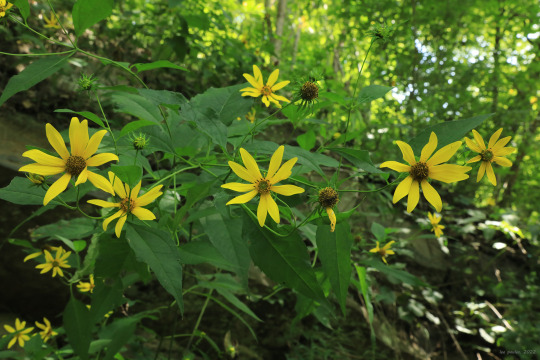
Photos from a late summer bike ride on the Mon River Trail. With autumn just around the corner, the climatic, life-sustaining ceremonies of the season have taken on a frantic, bittersweet urgency, from the proliferation of late summer blooms to the frantic chirrups of insects in search of mates before they succumb to the first frost of October. As the deep greens of summer fade and begin to sacrifice themselves to a fiery self-immolation, I salute Nature’s relentless push to plant the seeds of next year’s renewal.
From top: broadleaf arrowhead (Sagittaria latifolia), also known as duck-potato and wapato, an attractive aquatic plant whose edible tuber was an important source of starch for Native Americans; great blue lobelia (Lobelia siphilitica); a showy relative of cardinal flower with blue, split-lip flowers; blue mistflower (Conoclinium coelestinum), also known as wild ageratum and blue boneset, an unusual late summer aster with disc flowers only; tall coreopsis (Coreopsis tripteris), also known as tall tickseed, a grand, stately perennial up to 8 feet tall with distinctive tripartite leaves; a goldenrod soldier beetle (Chauliognathus pensylvanicus) navigating a wingstem flower (Verbesina alternifolia); northern spicebush (Lindera benzoin), a colonizing shrub whose luminous yellow leaves in fall contrast with its brilliant-red, aromatic berries; and pale-leaved sunflower ( Helianthus strumosus), a perennial sunflower whose leaves are mostly opposite in arrangement with long petioles and pale undersides.
#appalachia#vandalia#west virginia#mon river trail#late summer#life#renewal#flora#wildflowers#insects#sagittaria latifolia#broadleaf arrowhead#duck-potato#wapato#lobelia siphilitica#great blue lobelia#conoclinium coelestinum#blue mistflower#wild ageratum#blue boneset#coreopsis tripteris#tall coreopsis#tall tickseed#chauliognathus pensylvanicus#goldenrod soldier beetle#verbesina alternifolia#wingstem#Lindera benzoin#northern spicebush#helianthus strumosus
101 notes
·
View notes
Photo
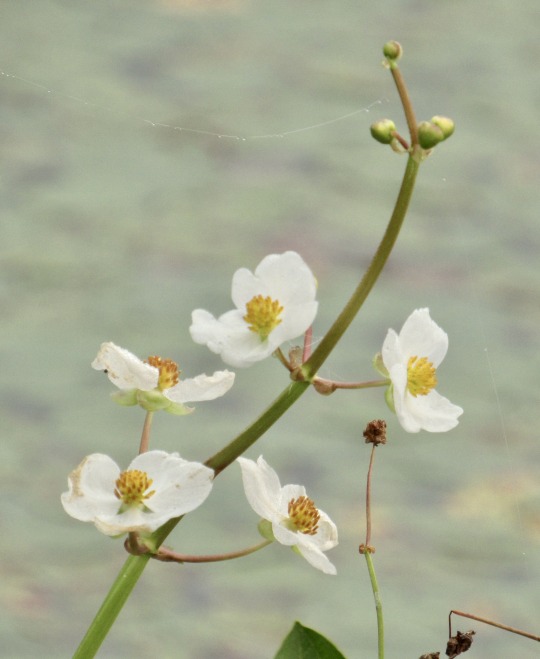
Arrowhead, Sagittaria latifolia, a water plant blooming at the lake.
192 notes
·
View notes


